Hotel Average Length of Stay: Definition, Formula & Calculator
Oct 26, 2025
 Mika Takahashi
Mika TakahashiPopular Categories
Hotel Technology & InnovationHotel Operations OptimizationDigital MarketingIndustry TrendsRevenue ManagementHospitality Industry
Popular Categories
Trending Post
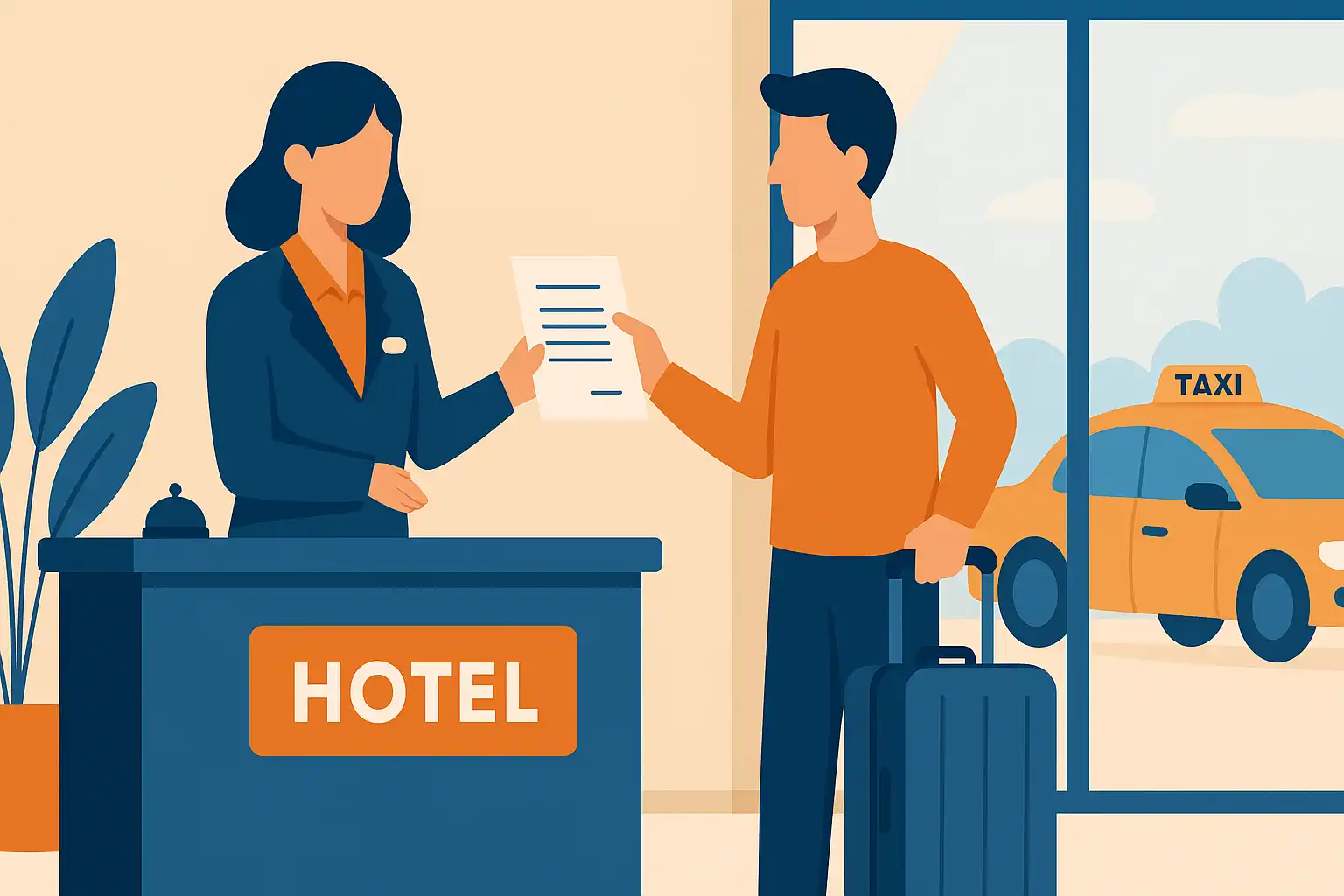
Hotel Walk Letter Template: Professional Guest Communication
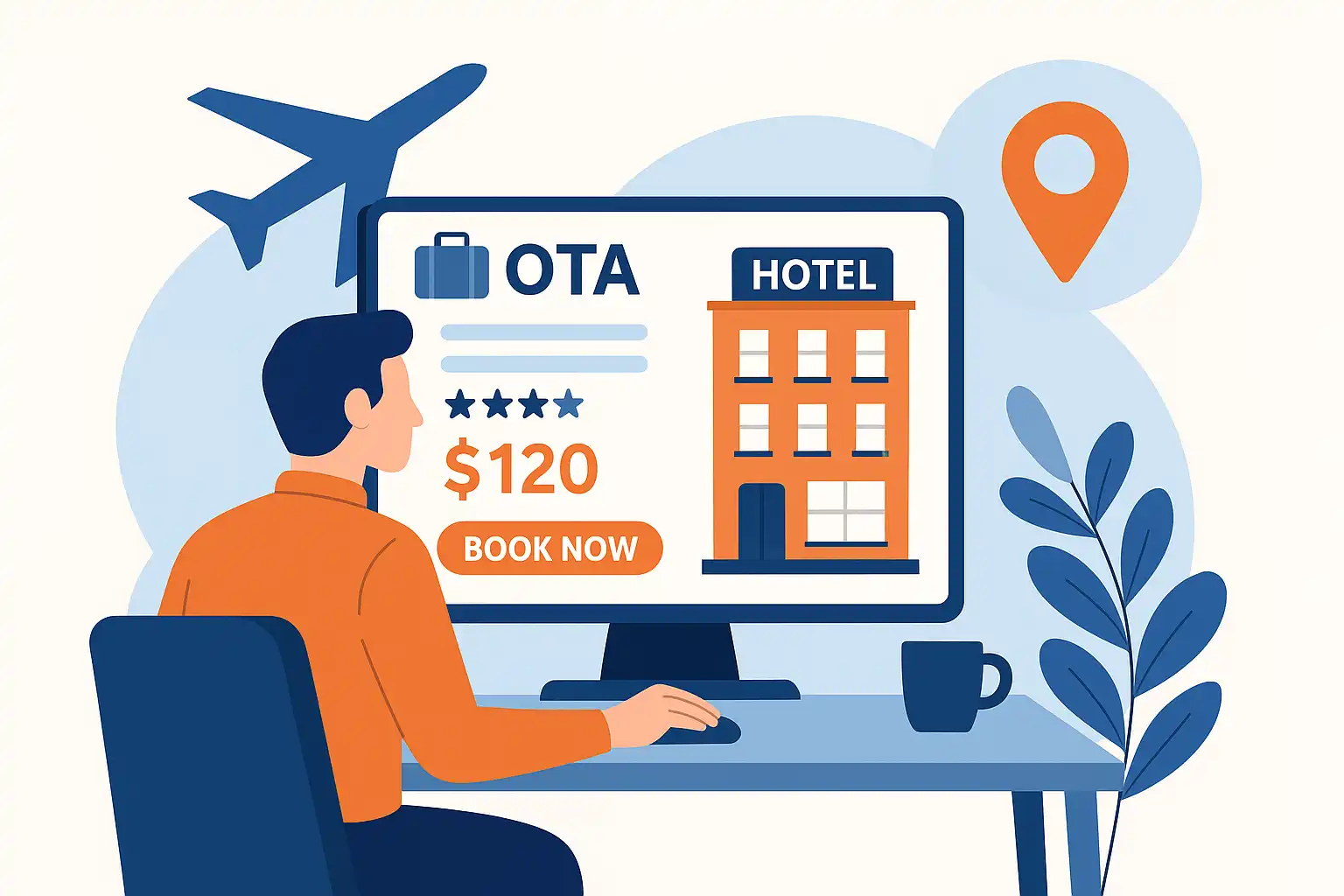
Online Travel Agents: What They Are and How They Work
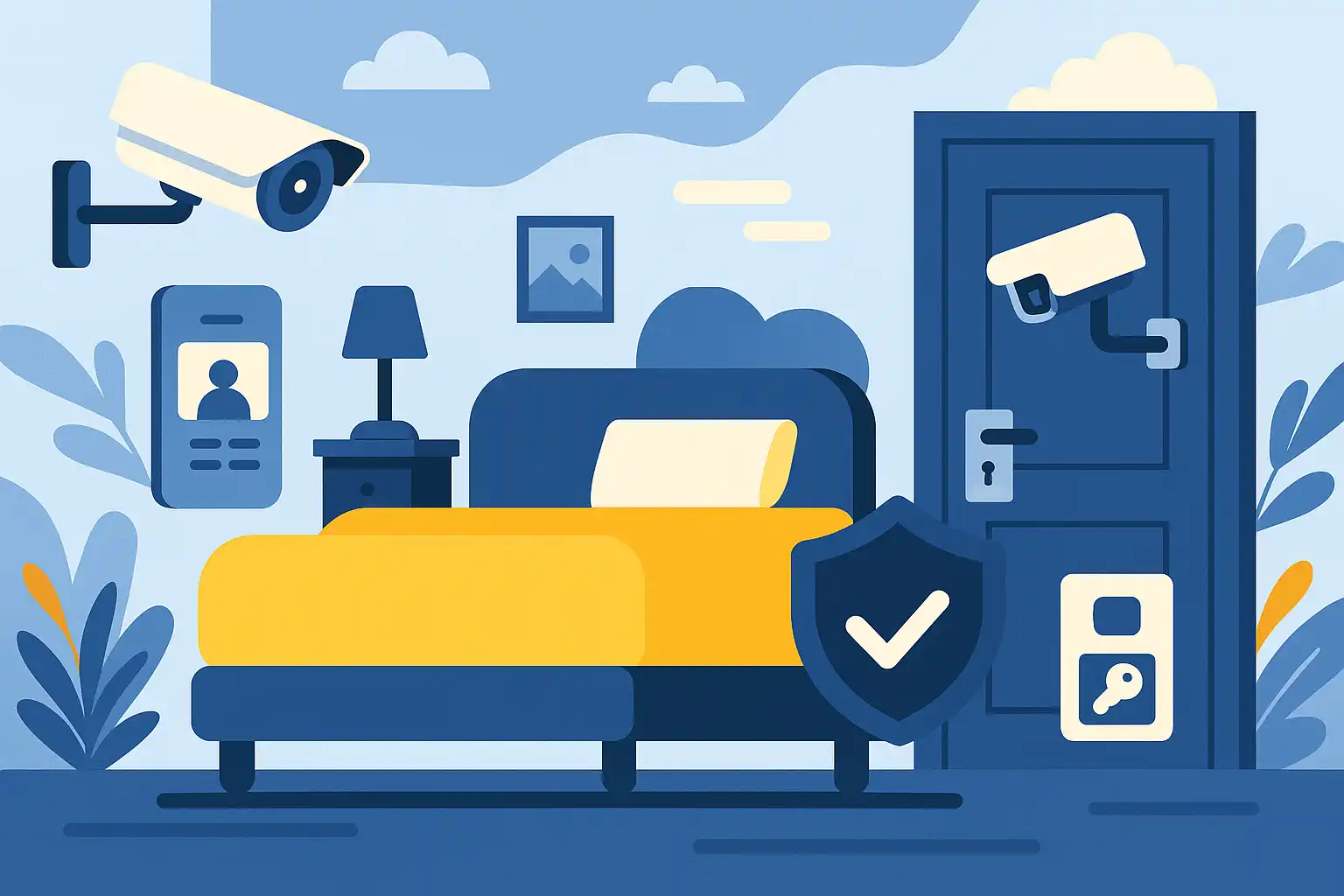
Hotel Security Systems: Modern Protection Solutions

Hotel Advertising: Complete Guide to Boost Bookings and Revenue
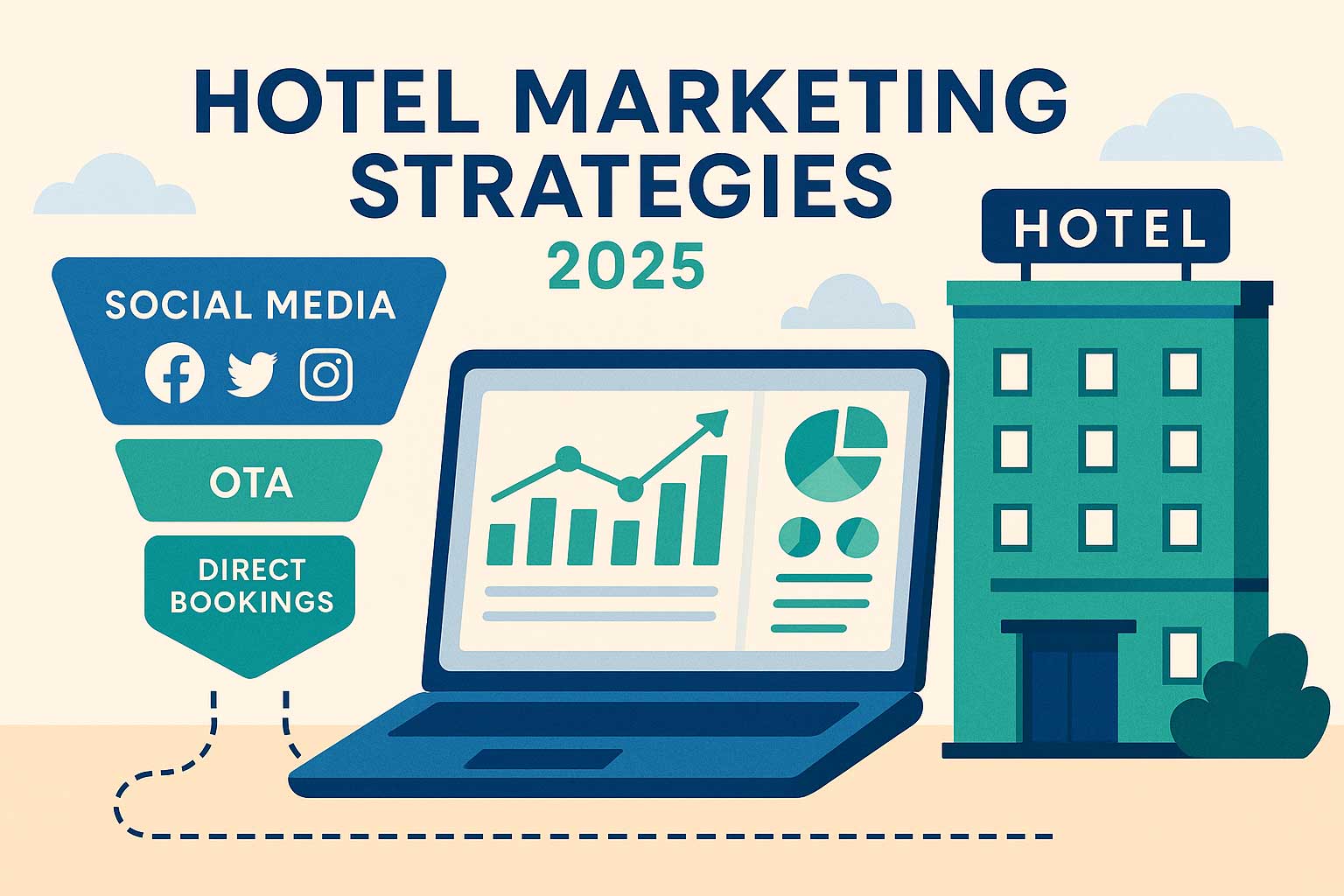
25 Hotel Marketing Strategy Ideas for 2025: Complete Guide

AI Reservation Agent: Revolutionizing Hotel Booking and Guest Experience

PMS Communication: Streamlining Property Management Through Effective Guest Messaging
Table of contents
In the hospitality world, understanding how long guests typically stay can be a game-changer for your property’s success. Hotel average length of stay is one of those crucial metrics that often flies under the radar but holds the key to maximizing revenue and running your operations smoothly.
Whether you’re running a cozy city hotel or a sprawling resort, getting a handle on your hotel’s average length of stay can open doors to new revenue streams while making day-to-day management easier. This guide breaks down everything you need to know — from how to calculate it to how to use it to your advantage.
What is Hotel Average Length of Stay (ALOS)?
Average Length of Stay, or ALOS, is a simple yet powerful metric in the hospitality industry that tells you the average number of nights guests spend at your hotel during a given time. It’s more than just a number — it paints a picture of your guests’ behavior, booking trends, and what kind of visitors your property attracts.
Think of ALOS as a reflection of your hotel’s unique personality and market position. Are you welcoming quick business travelers who pop in for a night or two? Or are you a relaxing resort where guests settle in for a week or more? Understanding these patterns helps you tailor your services and pricing to fit your guests’ needs.
For example, hotels in bustling city centers like Amsterdam usually see shorter stays, averaging around 1.8 nights, thanks to business travelers and tourists on quick visits. Meanwhile, resorts in places like Bali often enjoy much longer stays, averaging 8.5 nights, as guests soak up the vacation vibe.
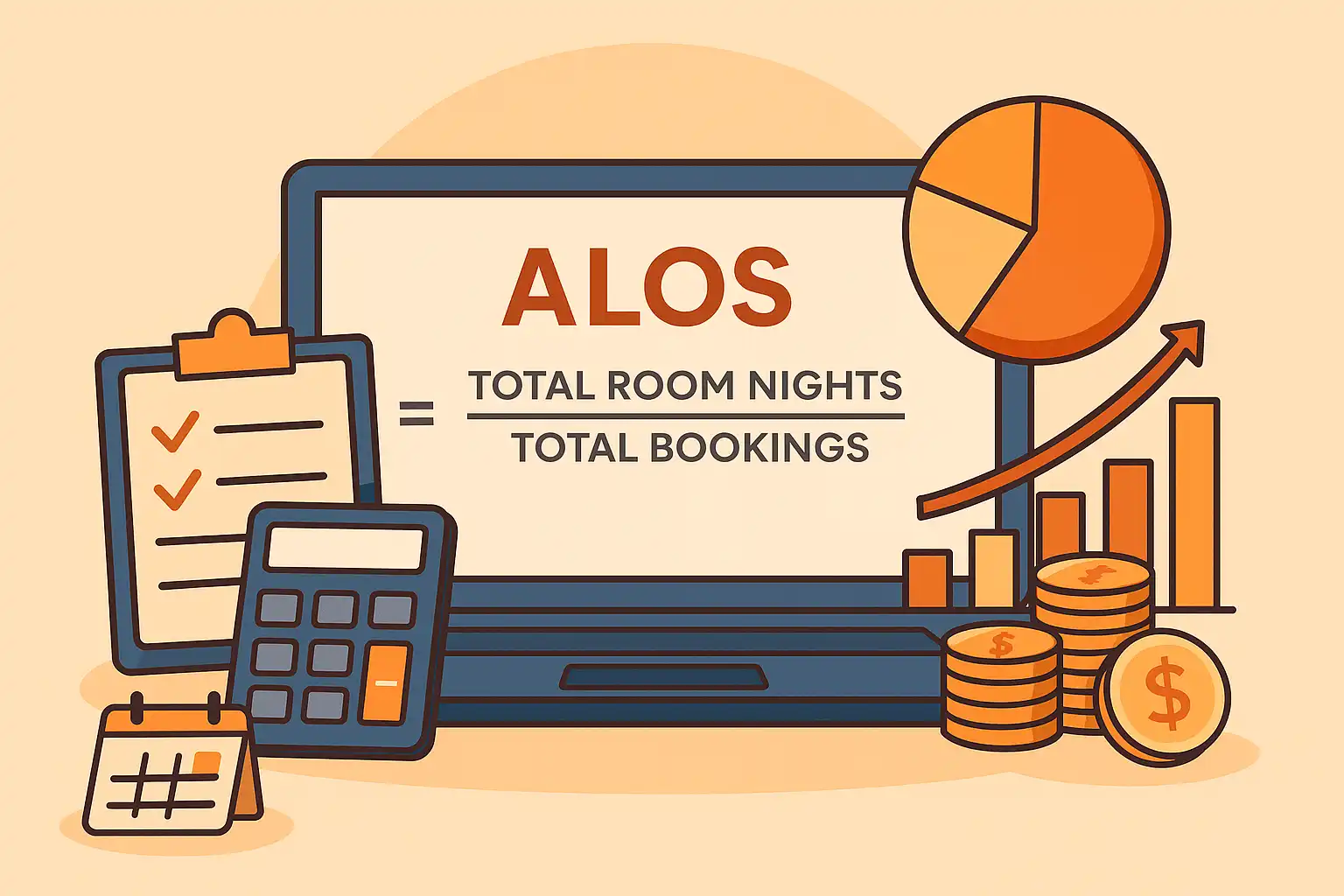
How to Calculate Hotel Average Length of Stay
Calculating your hotel average length of stay is straightforward and something you can easily do with data from your property management system. Just divide the total number of room nights sold by the total number of bookings during the period you’re looking at.
ALOS Formula: Total Room Nights ÷ Total Bookings = Average Length of Stay
Let’s say The New Dawn Hotel, a 30-room property, had 700 room nights booked across 350 bookings in April. Using the formula:
700 room nights ÷ 350 bookings = 2.0 nights ALOS
Here’s another example: if a hotel logged 875 room nights across 438 bookings in a period, the calculation would be:
875 room nights ÷ 438 bookings = about 2.0 nights ALOS
You can also use our Average Length of Stay Calculator (ALOS Calculator).
Best Practices for Data Collection and Calculation Periods
To get the most accurate picture, it’s important to be consistent with your data. Pull your numbers regularly from your property or revenue management system, ideally monthly. Monthly tracking gives you a good balance between detail and stability, but tracking weekly or by guest type can offer even richer insights.
Keep your timeframes consistent when comparing data over different periods. Also, decide upfront how you’ll handle tricky cases like no-shows, group bookings, or complimentary stays to keep your calculations clean and meaningful.
Common Mistakes to Avoid When Calculating ALOS
Watch out for mixing data from different periods — comparing monthly to quarterly numbers can give misleading results. Also, be consistent in how you count group bookings, whether as one booking or multiple.
Extreme outliers, like guests staying for unusually long periods, can skew your average, especially if your property is small. Consider whether to exclude these or use median values alongside averages to get a clearer picture.
Why Average Length of Stay Matters for Hotel Operations
Knowing your hotel’s average length of stay isn’t just about numbers — it has real, practical impacts on how you manage and grow your business.
Hotels with higher ALOS often enjoy lower guest turnover costs, meaning fewer check-ins and check-outs to handle, less housekeeping hustle, and steadier revenue streams. Encouraging guests to stay longer helps you schedule staff more efficiently and predict demand more reliably.
Impact on Revenue Management and Pricing Strategies
ALOS is a vital tool for revenue managers. It helps you forecast demand and craft pricing strategies that make the most of busy periods without sacrificing bookings during slower times.
You might offer discounts for longer stays or set minimum stay requirements during peak seasons. Hotels with longer average stays can better anticipate when guests will linger and adjust rates accordingly.
Operational Efficiency Benefits from Reduced Turnover Costs
Longer stays mean fewer turnovers, which translates to less work for your front desk and housekeeping teams. This can reduce labor costs and allow for more thorough cleaning and maintenance, improving overall guest satisfaction.
With predictable guest turnover, you can optimize staffing levels across departments, from housekeeping to maintenance.
Enhanced Forecasting Capabilities for Demand and Staffing
Tracking ALOS trends helps you plan ahead. You’ll know when to expect longer stays or quick turnovers, so you can adjust inventory, staffing, and pricing strategies proactively rather than reactively.
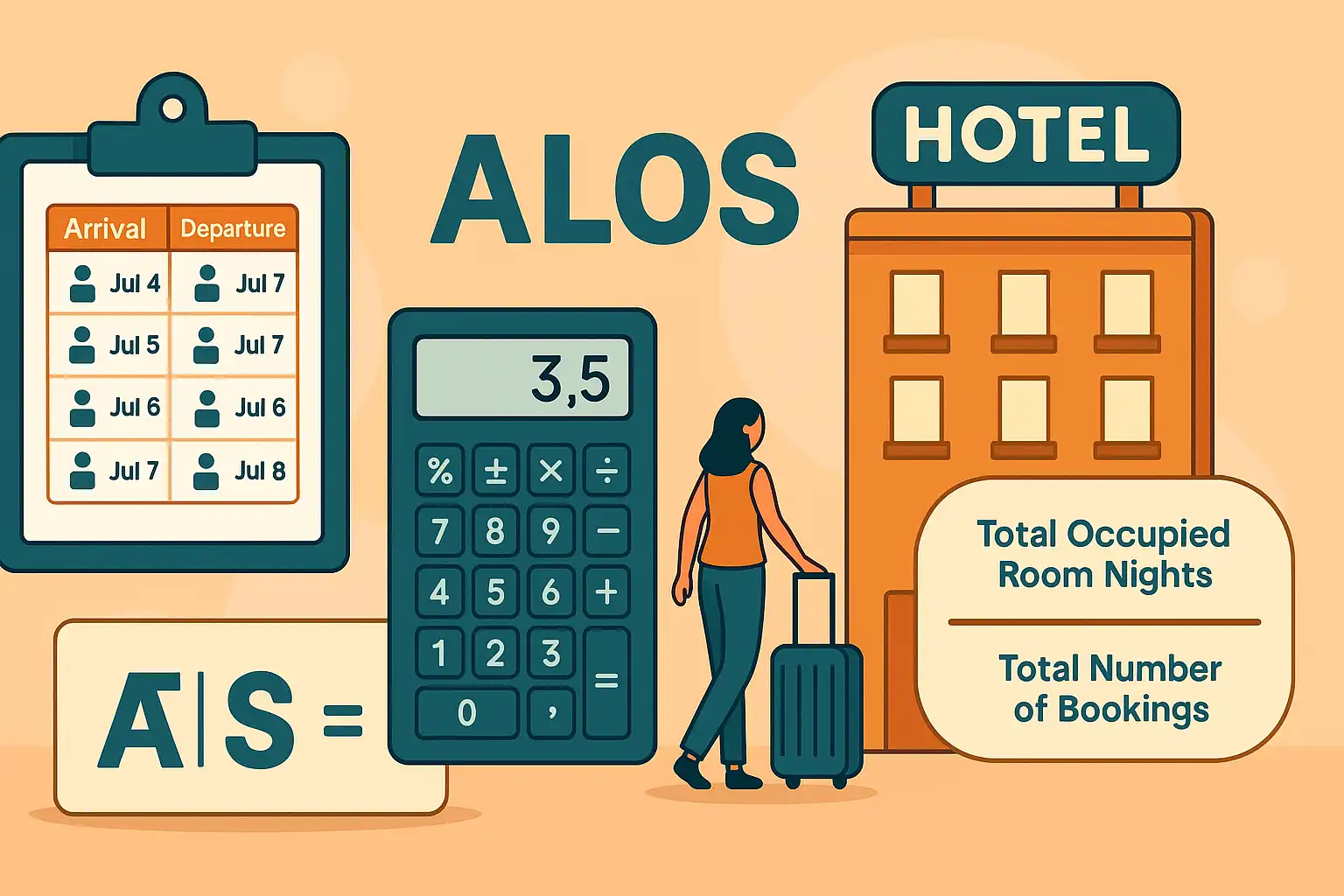
Industry Benchmarks for Hotel Average Length of Stay
Average length of stay varies widely depending on property type and location, so it’s helpful to know what’s typical in your market.
Urban Business Hotels: 1-2 Nights Average
City hotels catering to business travelers usually see the shortest stays, around 1.8 nights in the US, matching global trends. These guests often stay just long enough for meetings or quick trips.
Leisure Resorts: 4-7 Nights Average
Resorts attract guests looking for a full vacation experience, so longer stays between 4 to 7 nights are common. Madeira, for example, averages 4.5 nights, well above many other destinations.
Extended Stay Properties: 7+ Nights Typical
Extended stay hotels cater to guests needing temporary housing for work assignments or relocations, with stays often exceeding a week.
Backpacker hostels stand out with averages around 3.15 nights, attracting budget travelers who often seek longer stays.
US Market Data: Recent Trends
In the US, average stays have nudged up from 1.9 nights in 2019 to 2.1 nights in 2022, reflecting shifts like more remote work and changing travel habits.
International Comparison: Spain’s Market Performance
Spain’s average stay in 2022 was 3.11 nights, higher than the US average, showing how cultural and tourism differences impact guest behavior.
Key Factors That Influence Hotel Average Length of Stay
Many factors come into play when it comes to ALOS, and understanding these can help you tailor your approach.
Seasonality and Peak Travel Periods
Seasonal trends often dictate whether guests stay longer or shorter. Leisure properties see longer stays during vacation seasons, while business hotels may have shorter weekday visits.
Property Type and Target Market Positioning
Your hotel’s category and target guests heavily influence stay length. Luxury resorts, budget hostels, and business hotels all have distinct patterns.
Guest Demographics and Booking Behavior
Corporate travelers usually book shorter stays, while families, retirees, and digital nomads often stay longer. International travelers also tend to stay longer to make the most of their trip.
Local Events and Business Travel Patterns
Conferences, festivals, and trade shows can cause spikes in demand and influence stay lengths. Knowing your local calendar helps you plan minimum stay policies and promotions.
Proven Strategies to Increase Average Length of Stay
Boosting your hotel average length of stay is all about balancing guest satisfaction with smart revenue tactics.
Minimum Length of Stay Policies
Setting minimum stay requirements during busy times like holidays or events can help increase ALOS and overall revenue. Just be cautious about applying these restrictions during slower periods when they might deter bookings.
Length of Stay Pricing and Packages
Offer attractive deals like “4 nights for the price of 3” or discounts for bookings of 3+ nights. These packages encourage guests to add extra nights without feeling pressured.
Targeting Remote Workers and Extended Stay Guests
The rise of remote work means hotels can attract longer-staying guests by offering packages with high-speed Wi-Fi, dedicated workspaces, laundry allowances, and flexible check-in/check-out.
Partnering with companies that organize corporate retreats can also boost your ALOS significantly.
Guest Experience Enhancement
Highlight amenities and local experiences that encourage guests to linger. Promote your spa, dining options, and nearby day trips to give guests plenty of reasons to stay longer.
Automated messages during their stay can gently remind guests of extension offers or special packages.
Revenue Impact of Average Length of Stay
Longer stays don’t just mean more room nights — they often lead to higher total revenue per booking through increased spending on amenities, dining, and services.
Direct Correlation Between Longer Stays and Revenue
Every extra night can bring in more money, not just from the room rate but from extras like spa visits, meals, and activities. Extended stay guests often take fuller advantage of what your hotel offers.
Reduced Operational Costs from Fewer Check-ins and Check-outs
Fewer turnovers mean lower labor and supply costs for housekeeping and front desk staff, improving your bottom line.
Higher Ancillary Revenue Opportunities
Guests staying longer tend to spend more on hotel services, boosting ancillary revenue and overall profitability.
Improved RevPAR and TRevPAR Through Optimized Occupancy
Longer stays help smooth occupancy and improve revenue per available room metrics, making your revenue management more effective.
Lower Customer Acquisition Costs Per Room Night
With longer stays, the cost of acquiring each room night drops, making your marketing spend more efficient.
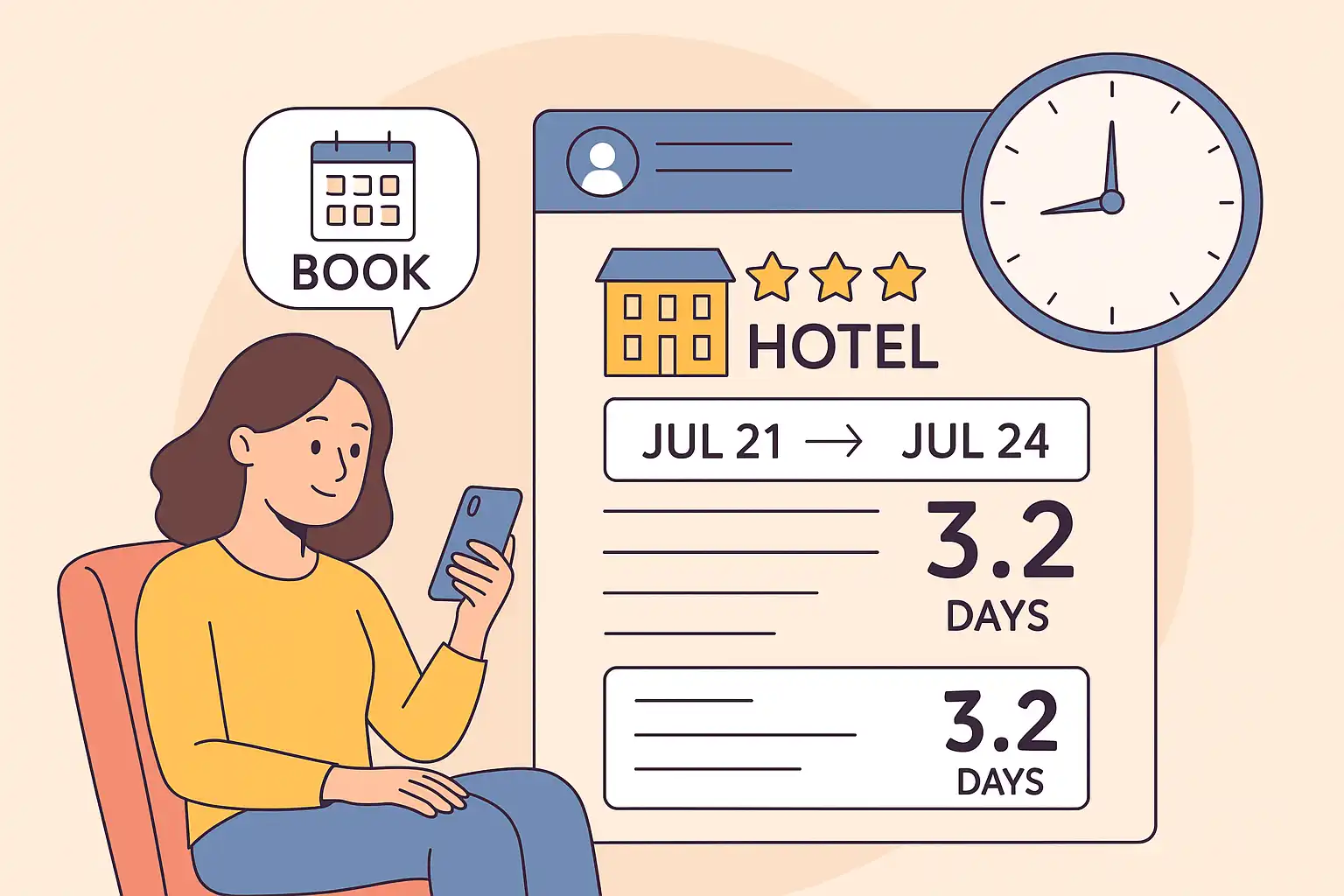
Technology Solutions for ALOS Management
Modern property management systems (PMS) and revenue management tools can make tracking and optimizing ALOS easier than ever.
Property Management Systems for Tracking and Analysis
Sophisticated PMS platforms automatically calculate ALOS and provide insights by guest segment, booking channel, and time period.
Dynamic Pricing Tools and Revenue Management Integration
Integrating ALOS data into your pricing strategy lets you offer length-of-stay discounts and adjust rates dynamically for maximum revenue.
Marketing Automation for Targeted Campaigns
Use marketing automation to send personalized offers encouraging longer stays, both pre-arrival and during the guest’s visit.
Real-time Reporting and Performance Monitoring
Real-time dashboards help you spot trends and respond quickly to changes in guest behavior or market conditions.
Monitoring and Optimization Best Practices
Keeping a close eye on ALOS and related metrics is key to continuous improvement.
Recommended Monitoring Frequency
Monthly tracking is a solid standard, but weekly checks during busy seasons can help you react swiftly. Quarterly and annual reviews support strategic planning.
Integration with Other Key Performance Indicators
Look at ALOS alongside ADR, RevPAR, occupancy, and guest satisfaction to get the full picture of your hotel’s performance.
Seasonal Trend Analysis and Strategic Adjustments
Use historical data to identify when to implement minimum stay policies or promote extended stay packages.
Guest Feedback Collection and Post-stay Surveys
Ask guests about their stay length preferences and what might encourage longer visits. Their insights can guide your strategies.
Competitive Benchmarking and Market Intelligence
Compare your ALOS with similar properties to set realistic goals and spot growth opportunities.
Common Challenges in Managing Average Length of Stay
Optimizing ALOS isn’t without its hurdles.
Balancing Longer Stays with Revenue During High-Demand Periods
Sometimes shorter stays at higher rates bring more revenue than longer ones. Finding the right balance is crucial.
Seasonal Variability Requiring Flexible Strategies
Adjust your approach as seasons and market conditions change to stay competitive.
Diverse Guest Preferences and Market Segment Needs
Serve your core guests well without alienating secondary markets by tailoring offers and communication.
Competitive Pressure and Market Positioning
Keep an eye on competitors but stay true to your brand’s unique appeal.
Data Accuracy and Collection Consistency
Ensure your data is clean and consistent to make confident decisions.
Determining Optimal ALOS Targets
Set realistic goals based on your market, property type, and business model.
Strategic Decision Making with ALOS Insights
Use ALOS data to refine pricing, marketing, staffing, and investment decisions. This holistic approach helps you boost revenue while enhancing guest satisfaction.
Using ALOS Data to Refine Pricing Strategies
Craft discounts and packages that reward longer stays without undercutting your rates.
Targeted Marketing Campaign Development
Focus on guest segments that naturally book longer stays and tailor your messaging accordingly.
Operational Staffing Optimization
Plan staffing levels based on expected guest turnover for better efficiency.
Investment Decisions for Extended-Stay Amenities
Invest in facilities and services that encourage guests to stay longer and spend more.
Distribution Channel Strategy Adjustments
Allocate marketing resources to channels that deliver longer-staying guests.
Future Planning and Capacity Management
Use ALOS trends to guide expansion, renovations, and long-term strategy.
Mastering your hotel average length of stay is more than just crunching numbers — it’s about understanding your guests, optimizing your operations, and making smarter business decisions. When you treat ALOS as a strategic asset, you set your property up for sustained success in the competitive hospitality landscape.
